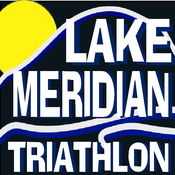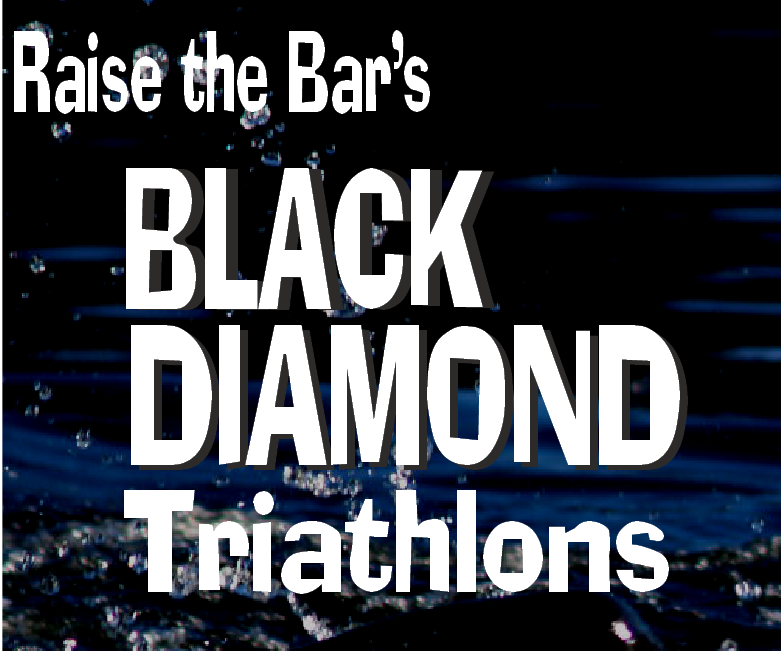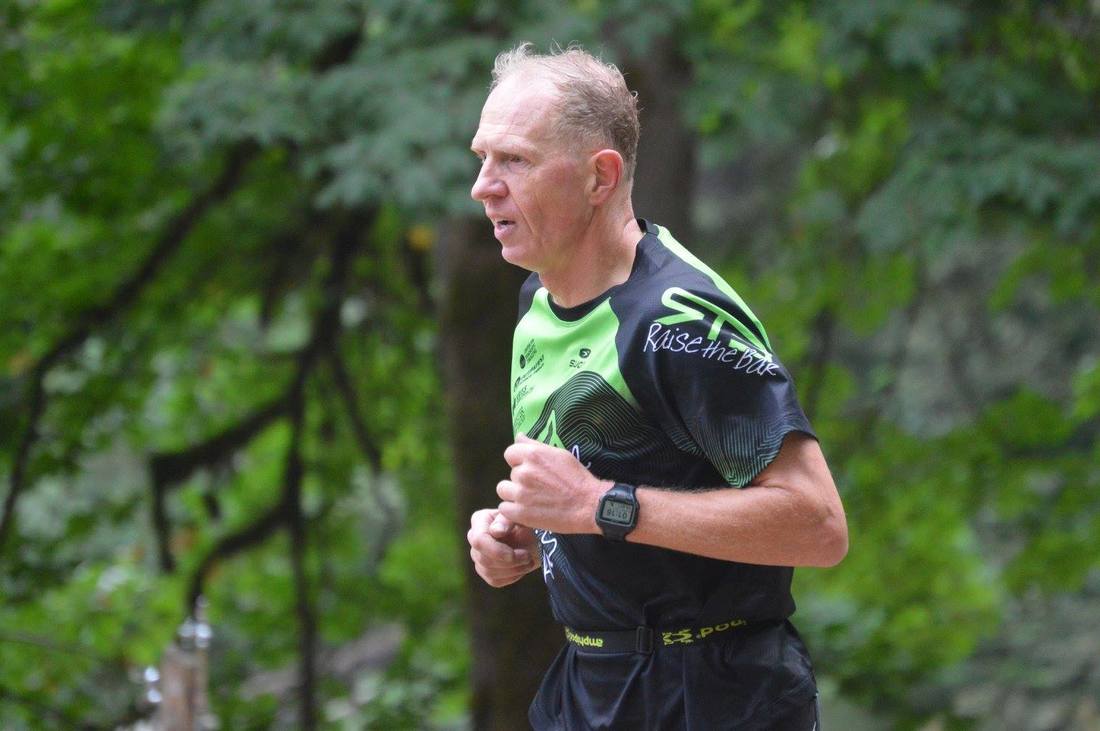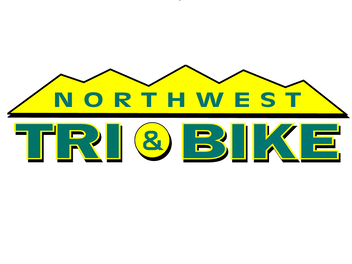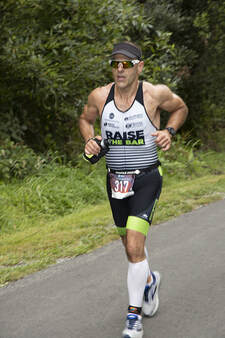 By Holly Pennington, PT, DPT Take a deep, slow breath and close your eyes. Imagine your ideal run. Go through all of your five senses. What do your surroundings look like? How do your legs feel? What scents are in the air? What do you hear that soothes you? How does a fresh drink of water taste on your tongue? Whether you pictured yourself enjoying the flow of a fast run on a cool, fall morning or settling into the rhythm of an easy pace on a warm, summer evening, chances are that you are among the majority of runners who wish your “ideal” happened more often. You may start your workouts with high hopes, encounter unexpected cramps or fatigue, power your way through with a mix of determination and iTunes distractions, then settle for the satisfaction of checking a mileage and/or time goal off of your list. But, what if your time spent running could be consistently enjoyable? What if the feelings associated with your ideal run could be experienced more often than not? Enter mindful running, a technique that may help you do exactly this. The positive benefits of mindfulness meditation are practically endless. From easing physical pain to improving feelings of loneliness, mindfulness can play a significant role. Typically, it is performed seated with a still body and plenty of athletes advocate for the addition of this type of meditation to a training program. However, scientific research and running experts have started asking questions about the benefits of practicing mindfulness during exercise. So far, research suggests that those who intentionally focus on the feeling of movement and pay attention to their surroundings enjoy exercise more than those who do not, and feel less stressed, anxious and depressed. Mindful running draws from this research and incorporate elements of mindfulness meditation into training, helping runners tune into the present moment and focus attention on the body, mind and environment during the act of running. Through training the mind, the full experience of the body improves, enhancing the natural, positive effects of the increased endorphins produced by running. Physical discomfort and pain are met with the nonjudgmental acceptance characteristic of mindfulness. Increased attention is placed on form, improving efficiency and flow. There are many ways to begin mindful running and a variety of resources to help you do so (see my list at the end of this article), but here are a few tips to get you going: Breathe before you begin: Before you start the clock, take a few deep, slow breaths. This signals your mind to become attuned to your body through breathing and shifts you into a less distracted mental state. Set your intention: Before you start the clock, find your focus for this particular workout. This is different than an objective goal like distance or time, as it shifts the focus to form and flow. (If you have questions about your running form, see the resource list below.) To set your intention, ask yourself questions like, “how do I want to feel during my run?” or “what specific aspect of my form do I want to focus on today?” Count something: If you are new to mindfulness, counting your breaths or footfalls as you run will help your mind and body stay connected. When you get to 10, start over and when your mind drifts from the count, simply return to where you left off and continue. No judgment! Use a mantra. Choose a short phrase that is meaningful to you to repeat in your mind as you run, such as “be here now” or “breathe in, breathe out.” Ditch the earbuds. To be fully present in your mind and body as you run, the elimination of distractions such as music and podcasts is a must. (exception: mindful running meditation apps!) If you can’t bear the thought of a device-free run, start small. Try 5 minutes of mindfulness before starting your playlist. Pay attention to your surroundings. Direct your attention to the sights, smells and sounds around you for a fully embodied run. Try a 3-2-1 pattern where you name 3 pleasing sights, 2 soothing sounds and 1 pleasant smell. Or, focus on sights for 3 minutes, sounds for 2 minutes and smells for 1 minute. Start small. As with building any new habit, start small and build incrementally. Try mindfulness intervals, where you focus on counting your breaths for 5 minutes then switch to your familiar running routine for 5 minutes. Or try alternating a 3-2-1 pattern for 6 minutes with a 4-minute return to your usual habits. Mindful Running Resources Books: Running with the Mind of Meditation: Lessons for Training Body and Mind by Sakyong Mipham Let Your Mind Run: A Memoir of Thinking My Way to Victory by Deena Kastor The Mindful Athlete: Secrets to Pure Performance by George Mumford Apps: Run Mindful Headspace (Search for specific running meditations) Running Form Assessments: www.outpatientpt.com (contact a clinic near you to find a PT who specializes in running assessments) 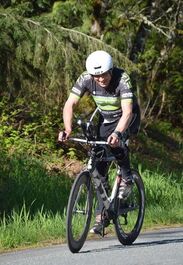 Article by RTB Sponsor: Holly Pennington, PT, DPT/Outpatient Physical Therapy If you are one of the 60% of cyclists suffering from neck pain, you have probably already gone down the bike fit road. Everything from the incline of your saddle to how your helmet fits can cause extra strain on the muscles and joints of the cervical spine. But what do you do when the angles on your bike are correct, your gear fits, and your neck still hurts? Just like bicycles, our bodies are intricate machines that need fine tuning to operate at their optimal level. Due to the flexed position of the lower (lumbar) and middle (thoracic) spine while cycling, the demand on the upper (cervical) spine musculature is high. When muscles that were created to support the neck are neglected and/or joints below the cervical spine become stiff, pain arises. And, a tune-up is necessary! Let’s look at three common musculoskeletal dysfunctions that contribute to neck pain in triathletes who spend a significant amount of time in the saddle. Deep Neck Flexor Weakness Most likely the phrase “core strengthening” brings planks, crunches and maybe even Kegel exercises to mind. Lower abdominals, deep low back muscles and pelvic floor muscles that support the lumbar spine dominate the “focus on the core” movement. But the reality is that there are core muscles of the cervical spine also. The deep neck flexors are a group of muscles with fancy names like longus coli and rectus capitus whose primary function is to support the neck. These small, neglected muscles traverse the front of the cervical spine and are the abdominals of the neck. When was the last time you did a few sets of neck crunches? Unless in distress, these muscles rarely get exercise, so they shrink and become weak. When they are not strong enough to fulfill their purpose as support for the 11-pound head sitting above them, other muscles compensate. Specifically, the trapezius muscle (which runs from the base of the skull to the shoulder) is recruited to work overtime to support the weight of the head. Overworked muscles become tight and painful, so the trapezius muscle becomes a source of neck pain. Deep neck flexor training is needed to restore the muscular balance around the cervical spine. Specific exercises (not neck crunches!) individualized for your unique cervical spine curvature build strength in these muscles and, simultaneously, relieve neck pain. Thoracic Spine Stiffness One of the key features of the cyclist’s position on the bike is spinal flexion. Both the lumbar and thoracic portions of the spine must be flexed (or rounded) to achieve aerodynamic positioning. This demand comes more naturally to the lumbar spine than the thoracic. Because the middle spine attaches to the ribs to protect key organs like the lungs and heart, the vertebrae in the thoracic spine naturally move less. They do not respond well to flexion for prolonged periods, so they stiffen with time. When this happens, more strain is placed on the areas above the tight areas (i.e. the lower cervical spine) to maintain the position needed to cycle. Just like our bikes, our bodies will get the job done somehow. The question is, how efficient are they? Thoracic spine mobility exercises and joint mobilizations that address the specific stiff segments balance the demand for spinal flexion and relieve the stress on the cervical spine. C/T Junction Strain The area where the neck meets the middle spine is called the cerivicothoracic junction or C/T junction. You can easily find this important joint by feeling down your neck for the knob-like bone at the base of your neck. At the C/T junction, the natural curve of the spine changes from extension to flexion. Cycling requires exaggeration of the normal cervical and thoracic curves (more extension in the neck and more flexion in the mid-back than what is required for most activities), which puts extra stress on the junction where the curve changes. Think of it like a busy interaction – increased traffic means more accidents and more wear and tear on the roads. The C/T junction responds to increased strain by becoming restricted, which places increased loads on the areas above and below it, similar to thoracic spine stiffness. When the cervical spine above the C/T junction is required to move more, it also needs even more support from the deep neck flexors. The vicious cycle begins! To restore motion in the C/T junction, manual therapy that focuses on joint mobilization combined with deep neck flexor training is necessary. Optimal spinal health is of paramount importance for cyclists and is difficult to achieve without professional assistance. Remember, your body is the most complicated machine you have and care beyond smart triathlon training is needed at times. When your bike fits but your neck still hurts, get help! Physical therapists at Outpatient Physical Therapy are specialists in deep neck flexor training and spinal joint mobilization. Call one of the 8 King/Pierce County locations to schedule your evaluation: www.outpatientpt.com 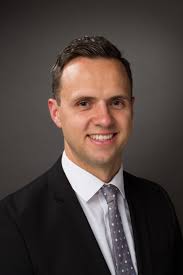 Dr. Chris Jones, DPM Endurance Foot & Ankle To understand the role of orthotics in cycling and running, first we need to make sure we have a good understanding of what an orthotic is and what its intended purpose is. The term orthotics, or orthoses, can refer to a support, brace, or splint used to support, align, prevent, or correct the function of movable parts of the body. More specifically, custom foot orthotics are designed to correct or alter abnormal gait or walking patterns by impacting the forces, pressures, and or/motions related to the foot during walking or weight-bearing activities. That being said, not all foot orthotics are created equally! An accommodative foot orthotic, for example, is -- in the simplest of terms -- a cushion. So when you step on that scanning device for your ‘custom’ Dr. Scholl’s orthotics, do not be deceived about what you are actually getting. You are essentially paying for an overpriced cushion. This is an accommodative orthotic. On the other hand, a functional orthotic, which is made of semi-rigid materials, is one that may provide some degree of correction to your lower extremity biomechanics (mechanical laws relating to the movement of your legs and feet). A functional orthotic can be especially helpful for the treatment or prevention of things like symptomatic flatfeet, Achilles problems, heel pain, knee or low back pain, or many other lower extremity problems/injuries. Some over-the-counter products can be classified as functional orthotics, however, we should not confuse them with custom orthotics as these prefabricated devices are not designed specifically for your feet and your feet only. That is not to say that over-the-counter orthotics cannot be beneficial for you, however. So what role could orthotics play in your training? First, let’s discuss running. Running injuries in the everyday triathlete are all too common. If you’re one of the few who have avoided a running-related injury, hats off to you! If you are like the rest of us, however, and you are anything like me, you are likely desperate for a solution. Your injury could be due to overuse, your mechanics, shoe gear, terrain, or a number of other factors. However, if you are experiencing frequent injuries, a biomechanical evaluation for orthotics is something you should definitely consider. Anecdotally, many swear by their effectiveness. And scientifically, the medical literature has demonstrated that custom, functional orthoses do alter the kinetics of the lower extremity during running. However, we do not know to what extent and is it significant enough to prevent or help injury. There is evidence to suggest that conditions such as Achilles tendinopathy (tendinitis), plantar fasciitis/heel spurs, bunions, hammertoes and others can benefit from the use of custom orthoses in running activities. Not to mention, it has been demonstrated that a semi-rigid, functional orthotic can help a softer, lower-stability shoe to act like a higher-stability shoe. When it comes to cycling, the role for custom orthotics may be less apparent, but can be equally beneficial. As someone who uses custom orthotics in his cycling shoes, I can attest to their effectiveness. The key to an effective pedal stroke is a keeping the motion from your hips down to your toes in a consistent plane. Many triathletes and cyclists develop knee or foot pain due to inward/outward motion during the pedal stroke or an imbalance of distribution of pressure through the cleat and pedals. All issues that could possibly be corrected with a custom cycling orthotic (not to mention, a good bike fit). When it comes to the medical literature, again, the jury is still out. It certainly demonstrates orthotics’ effectiveness in altering mechanics, such as increasing the force under the great toe joint and aligning the knees, but its direct impact on FTP is unknown. Suffice it to say, however, a custom cycling orthotic is a rigid platform which has the potential to increase power slightly just like rigid cycling shoes do. A cycling orthotic should look and feel quite different from a running orthotic. Ideally, it will be very low profile, as to not take up too much space in your cycling shoes. It should also feature a more rigid material in the midfoot/forefoot to provide stiffness, for a more powerful and efficient stroke. So if you are frustrated by recurring injury or just curious about what an orthotic might be able to do for your training, don’t hesitate to reach out to our clinic for questions or to schedule an appointment. At Endurance Foot and Ankle we offer in-depth, frame-by-frame, slow-motion gait and run analysis for our clients, as well as evaluation and casting for sport-specific, custom orthotics. For cycling, we also offer video analysis of your pedal stroke mechanics and evaluation for custom cycling orthotics. 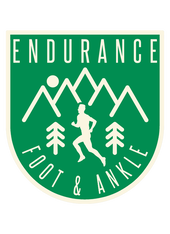 Dr. Chris Jones, DPM RTB welcomes Dr. Christopher Jones of Endurance Foot and Ankle in Issaquah. EFA helps athletes overcome and avoid injury, recover faster, and maximize performance.Services include Gait Analysis, Deep Tissue Release, Sport-specific custom orthotics, Recovery therapy (dynamic compression and cryotherapy), Sweat Analysis, and Diagnosis & Management of Lower Extremity Injuries. |
Raise the BarRace reports, upcoming events, news, and more, from RTB. Archives
September 2023
|
 RSS Feed
RSS Feed
